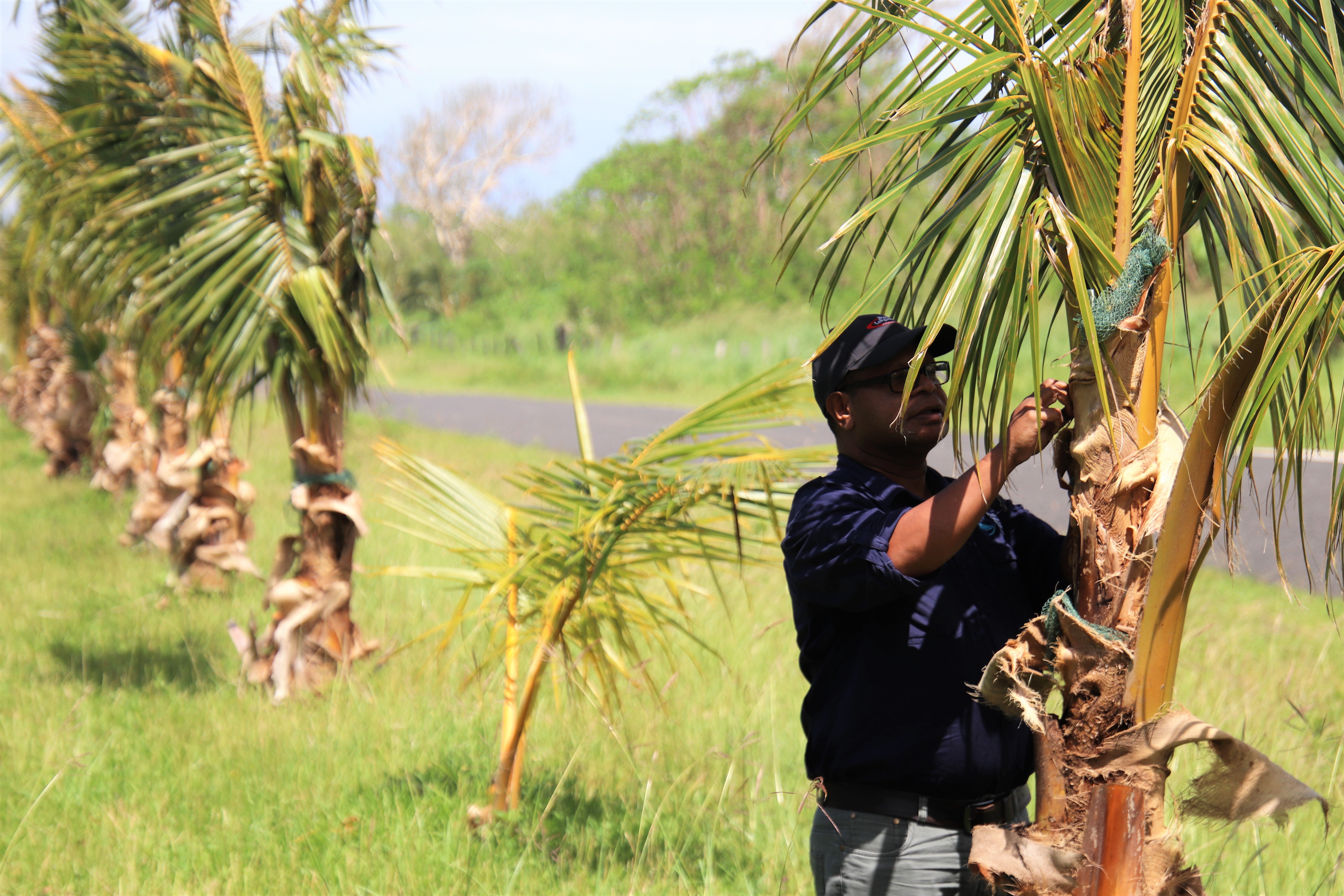
As the coconut rhinoceros beetle spreads to plantations in the Pacific, the Pacific Community’s (SPC) Land Resources Division PARC (Pacific Response and Awareness to the Coconut Rhinoceros Beetle) project continues to collaborate with countries and communities to curb new outbreaks. Here we talk with Mark Ero, Project Manager on the current status of the beetle and SPC’s efforts to eradicate it.
1. How many countries within SPC's membership are actively contending with the Coconut Rhinoceros Beetle (CRB)?
PNG, Solomon Islands, Vanuatu, New Caledonia, Fiji, and Samoa. Apart from SPC member PICTs, Guam, Hawaii, and Northern Marianas, which are US territories, are also actively battling the beetle.
2. Is there a way of knowing which strain of CRB is in each PICT?
The Pacific has been battling the spread of the Coconut Rhinoceros Beetles for years and is now challenged by the invasion of a new CRB biotype, the CRB-Guam strain, that has spread to eight Pacific Island countries in just a decade. The Guam strain, together with the much more established biotype CRB-S has hampered coconut industries in the region.
Below is a snapshot of the current country update that has the CRB-Guam strain together with the much more established biotype CRB-S:Below is a snapshot of the current country update that has the CRB-Guam strain together with the much more established biotype CRB-S:
|
Without |
CRB-G only |
CRB-S only |
Both strains |
|
Cook Islands |
Guam |
Fiji |
PNG |
|
Kiribati |
Hawaii |
Tonga |
Solomon Islands |
|
Tuvalu |
Northern Marianas |
Samoa |
Palau |
|
Nauru |
New Caledonia |
American Samoa |
Vanuatu |
|
Marshall Islands |
|
Wallis & Futuna |
|
|
Niue |
|
Tokelau |
|
|
French Polynesia |
|
|
|
|
FSM |
|
|
|
|
Pitcairn Islands |
|
|
|
3. Can the level of destruction from the CRB be tracked in any of these islands?
CRB damage normally reveals very characteristic notches on the trees and can easily be tracked through surveillance and delimiting surveys. The damage observed on the host plants is caused by the adults or young adult beetles who come to feed on the sap of the host plants. Symptoms appear one to three months after the beetle has passed in the form of a cup-shaped "V" or "missing corners" on the fins and are always associated with drill holes made in the trunk and base of the fins.
4. What has been the main vector for the transfer of CRB between Pacific nations?
This is not fully confirmed, but anecdotal evidence points towards them hitchhiking on sea vessels and air transport as they can be attracted to light. They can also be transported through the transfer of organic material, including soil, potting mixture and gravel aggregates.
5. What is SPC currently doing to help its member countries and territories recover or contend with CRB?
With funding support from the New Zealand Ministry of Foreign Affairs and Trade, it is assisting PNG, Solomon Islands and Vanuatu with awareness and management programmes. We are also providing technical support and training on surveillance and monitoring programmes to other PICTs upon request- particularly to those without CRB.
6. What nations have been the most successful in curtailing CRB effects?
The levels of damage in PICTs with only CRB-S have been contained as the strain is susceptible to a virus that is used as a biological control agent, but it has been challenging for those with CRB-G as they are resistant to the virus. Other existing management options, including awareness, monitoring and border checks have been used to slow down the spread, and virus screening studies are also underway to see if a strain effective against CRB-G can be identified.
7. Could you elaborate on the relationship CRB has with PICTs and their palm populations when compared to Southeast Asia? I understand this pest is native to Southeast Asia. Is it as devastating there?
In Southeast Asia, the population is kept under control by the natural enemy (virus) called the Oryctes NudiVirus (OrNV) but it does occasionally become an issue whenever a huge amount of organic matter is created either through natural disasters or anthropogenic activities (including agricultural activities). Beetles often become an issue during oil palm and coconut replanting programmes, but plantation owners control this by chipping palm trunks into very fine pieces which enables them to decompose faster.